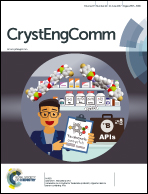Improvement of the THz response of Zn1−xMnxTe bulk crystals grown by a temperature gradient solution method†‡
Abstract
As a type of AII1−xMnxBVI alloy, Zn1−xMnxTe ingots with a diameter of 30 mm are grown as large single crystals by a temperature gradient solvent method under Te-rich conditions. The orange-red Zn1−xMnxTe crystals are cut and processed into size-appropriate wafers for fundamental studies, as well as for THz spectroscopy and magnetization response analyses. Mn segregation associated with the growth conditions is identified in the as-grown crystals, and an enriched higher concentration of Mn is observed inside the Te inclusion. To evaluate the effect of Mn on the Zn1−xMnxTe crystal, the site occupation is calculated via an ab initio study, and is further confirmed by electrical and optical property measurements. Mn tends to substitute Zn to form MnZn in Zn1−xMnxTe, which results in a low density of free charge carriers, through which the THz detection sensitivity is enhanced by 15–25% compared to the intrinsic ZnTe. Moreover, evident paramagnetic magnetization behavior is observed at variable temperatures due to the random distribution of an isolated Mn (Mnioct,Te6) spin with S = 5/2. We note that further optimization of the THz performance can be achieved by optimizing the growth process and tailoring the Mn content.



 Please wait while we load your content...
Please wait while we load your content...